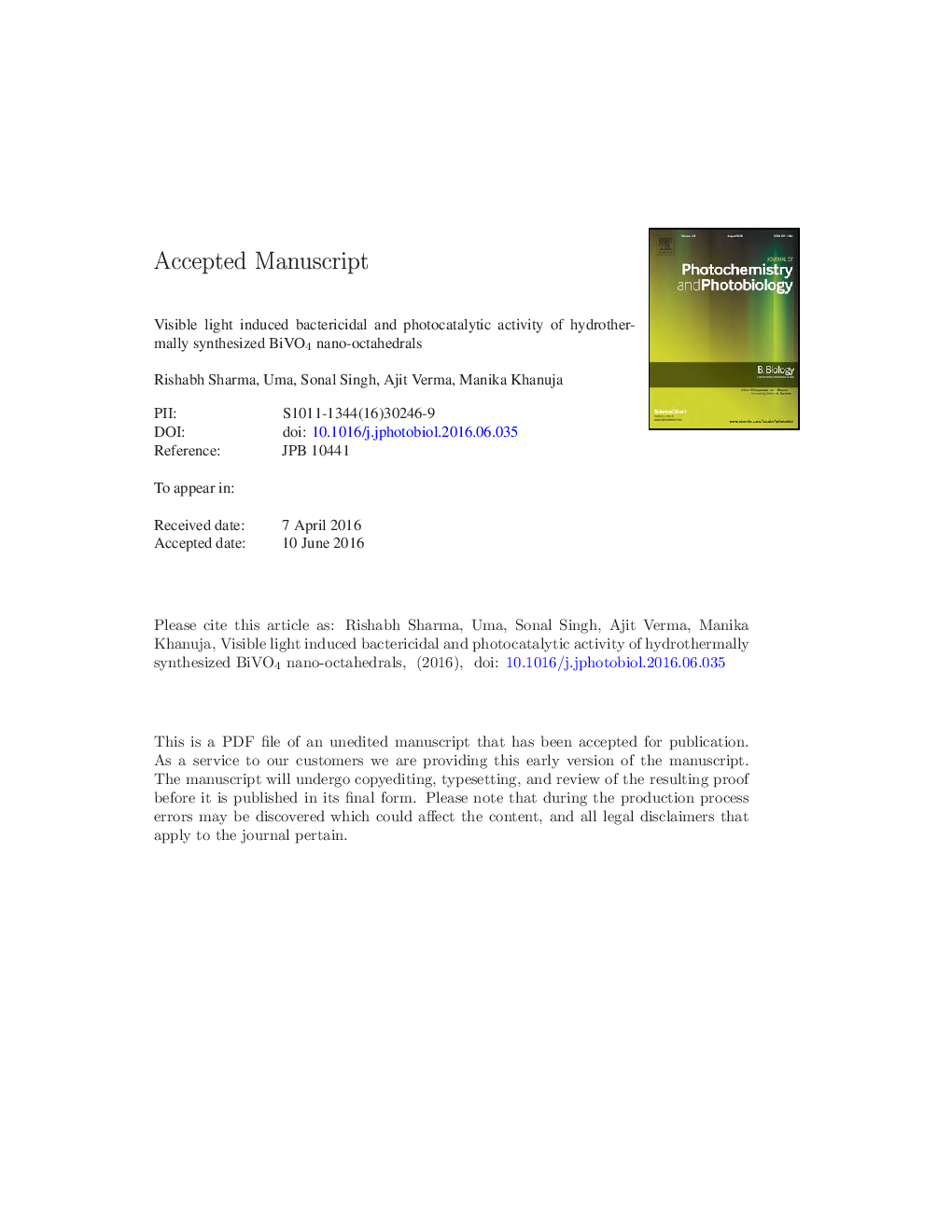| Article ID | Journal | Published Year | Pages | File Type |
|---|---|---|---|---|
| 6493532 | Journal of Photochemistry and Photobiology B: Biology | 2016 | 27 Pages |
Abstract
In the present work, monoclinic bismuth vanadate (m-BiVO4) nanostructures have been synthesized via simple hydrothermal method and employed for visible light driven antimicrobial and photocatalytic activity. Morphology (octahedral) and size (200-300Â nm) of the m-BiVO4 are studied using transmission electron microscopy (TEM). The crystal structure of m-BiVO4 (monoclinic scheelite structure) is confirmed by high resolution-TEM (HRTEM) and X-ray diffraction (XRD) studies. The band gap of m-BiVO4 was estimated to be ca. 2.42Â eV through Kubelka-Munk function F(RÂ â) using diffuse reflectance spectroscopy (DRS). Antimicrobial action of m-BiVO4 is anticipated by (i) shake flask method, (ii) MTT [3-(4,5-Dimethylthiazol-2-Yl)-2,5-Diphenyltetrazolium Bromide] assay for cytotoxicity. SEM analysis has been carried on Escherichia coli (E.coli) before and after treatment with nanostructure materials to reveal the mechanism underlying the antimicrobial action. Antimicrobial activity is studied as a function of m-BiVO4 concentration viz. 20, 40, 60 and 80Â ppm. The bacterial growth is decreased 80% to 96%, with the increase in m-BiVO4 concentration from 20Â ppm to 80Â ppm, respectively, in 2Â h. Photocatalytic activity and rate kinetics of m-BiVO4 nanostructures have been studied as a function of time on methylene blue (MB) dye degradation which is one of the waste products of textile industries and responsible for water pollution.
Related Topics
Physical Sciences and Engineering
Chemical Engineering
Bioengineering
Authors
Rishabh Sharma, Uma Uma, Sonal Singh, Ajit Verma, Manika Khanuja,
